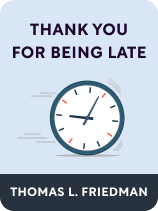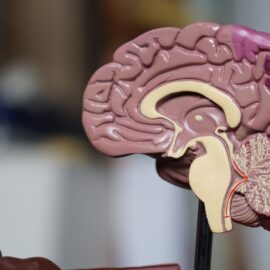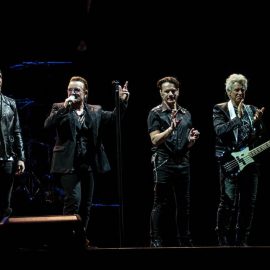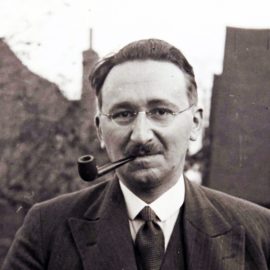

This article is an excerpt from the Shortform book guide to "Thank You for Being Late" by Thomas L. Friedman. Shortform has the world's best summaries and analyses of books you should be reading.
Like this article? Sign up for a free trial here .
What is St. Louis Park famous for? Why did the Jewish population of North Minneapolis relocate to St. Louis Park?
St. Louis Park is a suburb west of Minneapolis that became a safe haven for Jewish immigrants during the anti-Semitic discrimination in the 1880s and early 1900s. St. Louis park was more welcoming than other suburbs, and it was platted with started homes and realtors didn’t mind selling to Jews. Many Jews left North Minneapolis and relocated to St. Louis Park to escape the discrimination.
Keep reading to learn more about St. Louis Park’s community.
St. Louis Park
Between the 1880s and early 1900s, many Jewish immigrants settled in North Minneapolis because it was one of few areas they could get housing—anti-Semitic discrimination was rampant throughout the city. Jews were banned from all sorts of public institutions and had to start their own schools and hospitals.
In the 1950s, many Jews were fed up and left North Minneapolis for St. Louis Park. By the 1960s, around 20% of people living in St. Louis Park were Jewish.
Most of the other people living in St. Louis Park were Catholic and Protestant Nordic and German-descended Americans. There were plenty of clashes between these people and the incoming Jews, but at the same time, people started to figure out how to live and work together.
Part of this, the author suspects, was due to people mixing in public spaces. Public spaces in St. Louis Park were plentiful and people of all backgrounds and economic levels used them. Specifically, the following community features contributed to class-mixing:
- The public schools were well-funded and unlike today, teachers didn’t have to buy their own classroom materials. Almost everyone went to public school.
- There were no gated neighborhoods.
- Everyone used the same public bus system.
- There are several lakes near the Twin Cities that are surrounded by walking and biking trails that people of all classes have access to.
- The Minnesota State Fair attracted people from all classes and backgrounds.
Additionally, the community was supported by:
- A strong economy. In the 1960s, the middle class was still a place people could comfortably stay in their entire lives.
- Good politicians. Politicians worked together and compromised to come to decisions that benefited the community.
- For example, Hubert H. Humphrey, who later became vice president, got his start in St. Louis Park—he was mayor and tried to eradicate anti-Semitism.
- Public-private collaboration. Businesses regularly contributed to the community and were involved with local politics.
- For example, many businesses were members of the Five Percent Club, which means they donated 5% of their income to philanthropy such as building theaters and other public spaces.
- Community-minded citizens.
- For example, neighbors helped each other through harsh Minnesota winters because it was the only way to survive.
St. Louis Park wasn’t perfect—there was plenty of racism and sexism—but it did some things right.
Current State of Community in Minnesota
When the author returned to St. Louis Park four decades after leaving, he found that the community was still strong and still supported by:
- Class and culture mixing. People from all over the world now live in St. Louis Park and still encounter each other in public spaces such as schools and near the lakes.
- For example, the high school is now 1% Indigenous, 9% Latinx, 27% Black, and 58% White. The cafeteria serves halal meals.
- Good politicians. St. Louis Park politicians still compromise and work together.
- For example, in 2006, the city council voted to offer free public Wi-fi throughout the city. One of the members voted against the project because he didn’t think the infrastructure would survive a Minnesota winter. He said that as long as the vote was open, he was against the idea, however, if it passed, he would support it because he needed to work together with the rest of the council.
- Public-private collaboration. Businesses still feel obliged to provide jobs, fix local problems, and volunteer in the community.
- For example, the Itasca project is a group of people made up of business leaders, local officials, philanthropists, and educators who want to improve the community. One of their projects fights racial inequity by encouraging business leaders to look at how to support people of color in the community and the workforce.
- Community-minded citizens. The public has high expectations for politicians and business leaders, and they support community efforts even when they aren’t personally benefited.
- For example, 70% of people vote to increase property tax to fund public schools even though 85% or more of residents don’t have kids in school.
Adapting
St. Louis Park is an example of a community that’s well poised to weather the three accelerations. How do we build more communities like it? The author discusses two steps: 1) create communities of an appropriate size, and 2) overhaul infrastructure.
Appropriately Sized Communities
The fastest-adapting, smallest community—a single family—is too weak for the age of accelerations. Many families don’t have financial security, a permanent place to live, or the resources to engage in lifelong learning.
On the other hand, large communities, such as states or countries, aren’t fast and flexible enough to meet the needs of the age of accelerations, as we learned in Chapter 10.
A municipal community is a perfect size—small enough to be fast and flexible, and large enough to be supportive and improve everyone’s quality of life.
Overhaul Infrastructure
Traditional community infrastructure, such as parks, schools, and centers, needs to overhaul to meet the needs of the 21st century. Schools should become places that people of all ages can learn from, whether elementary education, adult lifelong learning, or daycare. Most people interact with community infrastructure anyway, so these public spaces are a good place to revamp.

———End of Preview———
Like what you just read? Read the rest of the world's best book summary and analysis of Thomas L. Friedman's "Thank You for Being Late" at Shortform .
Here's what you'll find in our full Thank You for Being Late summary :
- The problems that arise when the world changes faster than humanity can adapt
- How to adapt to technology, globalization, and climate change
- The importance of taking time to reflect and reorient






